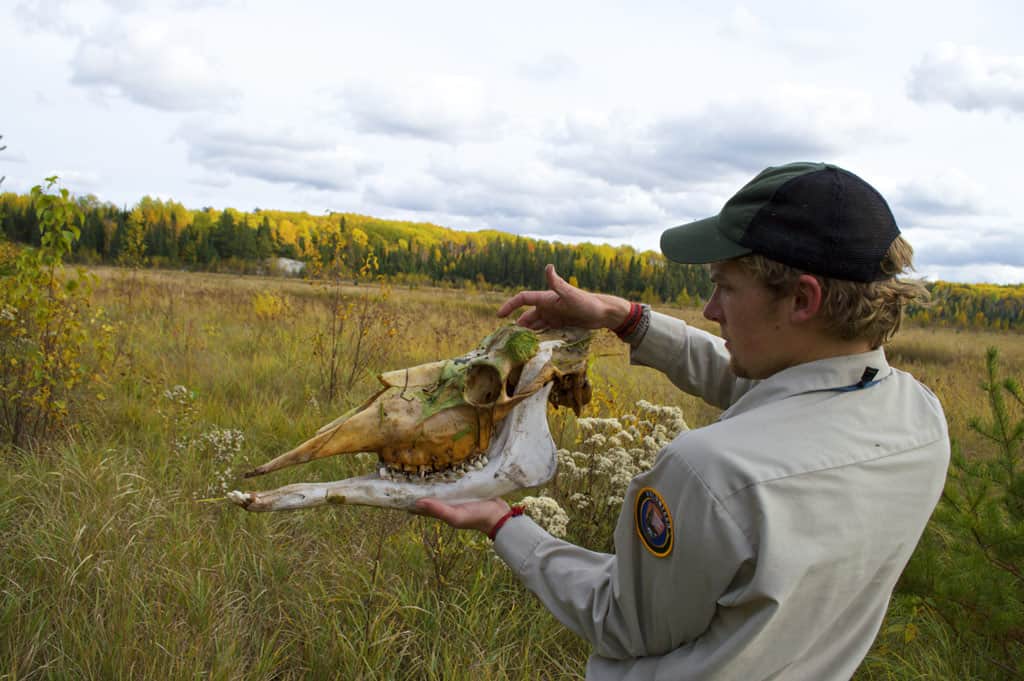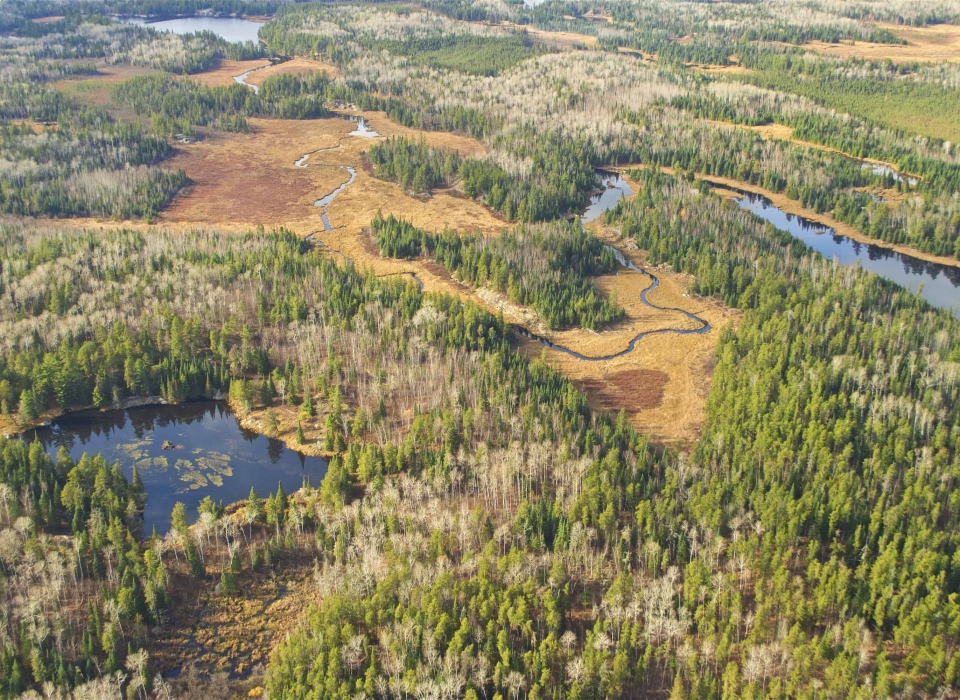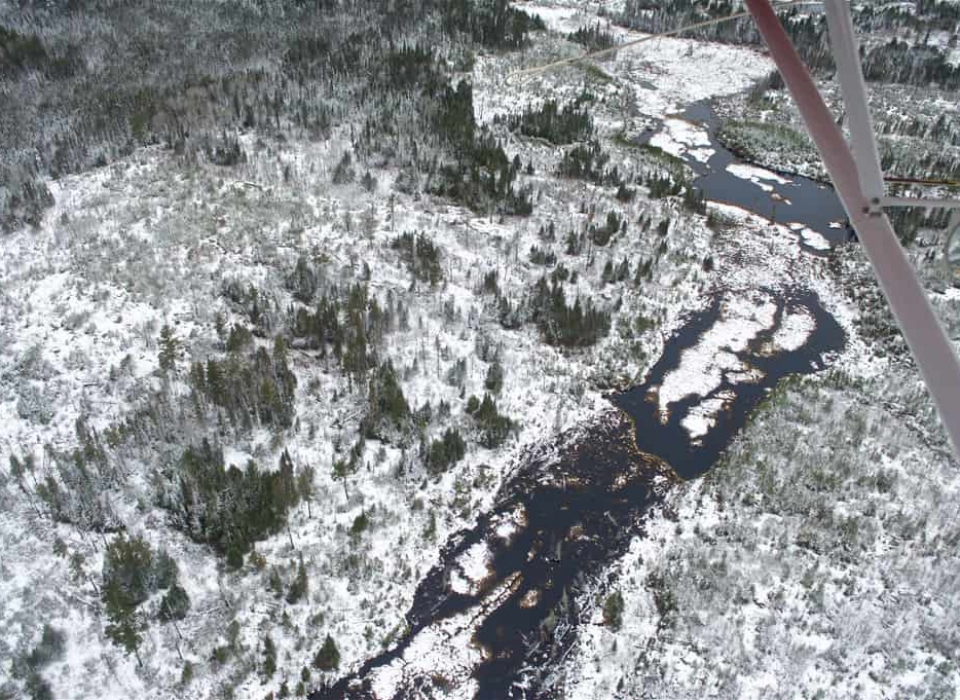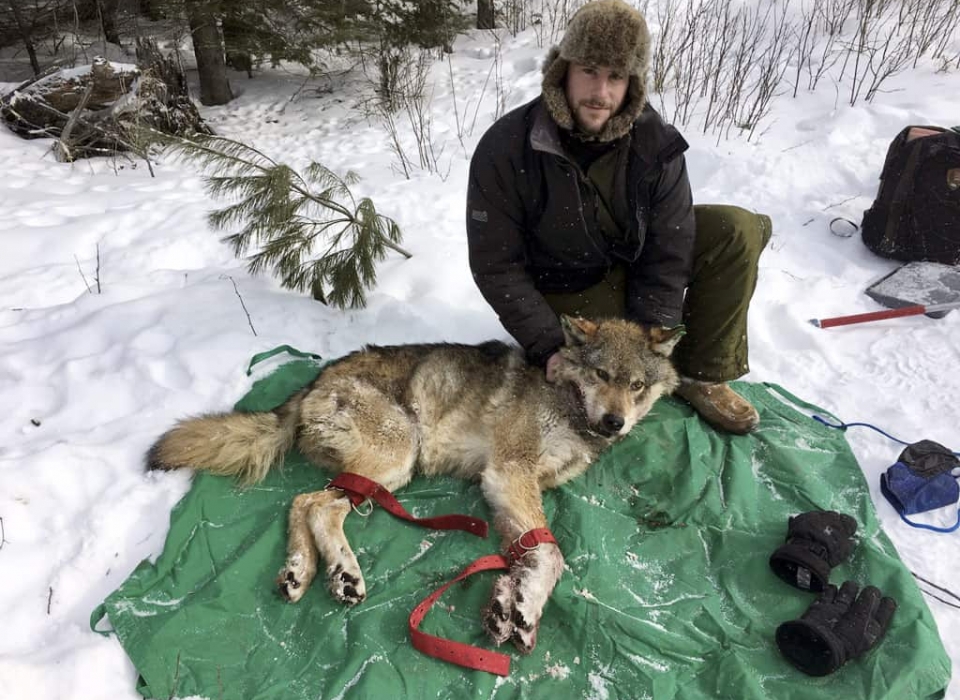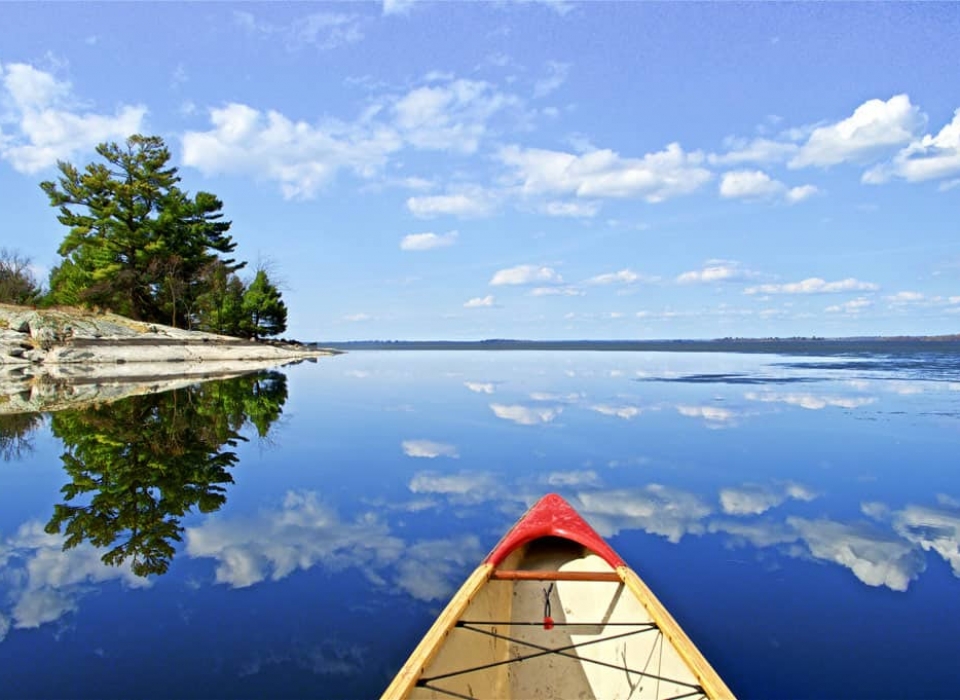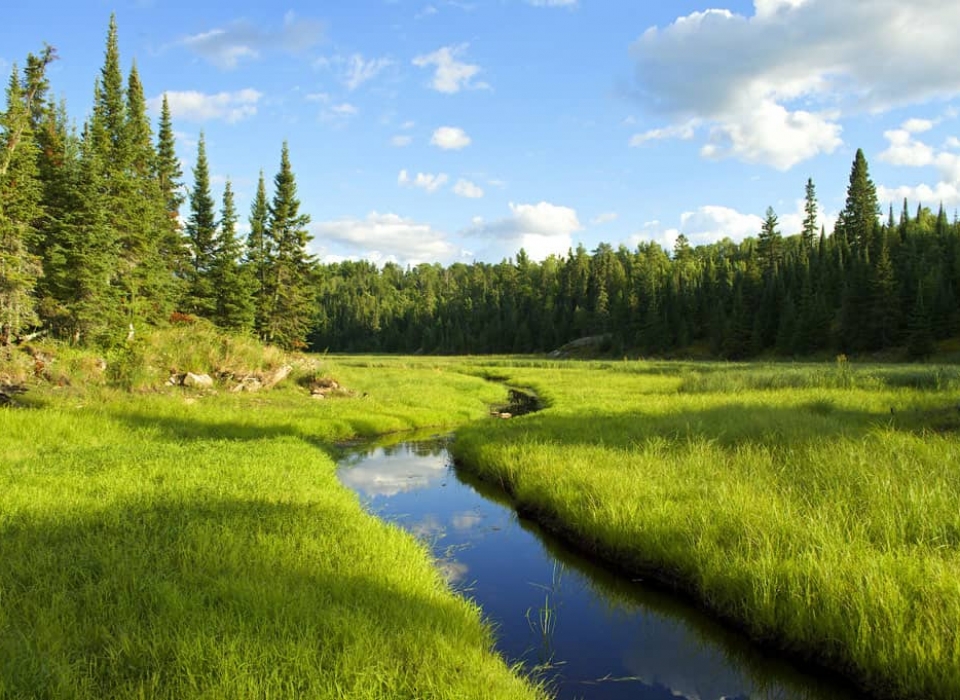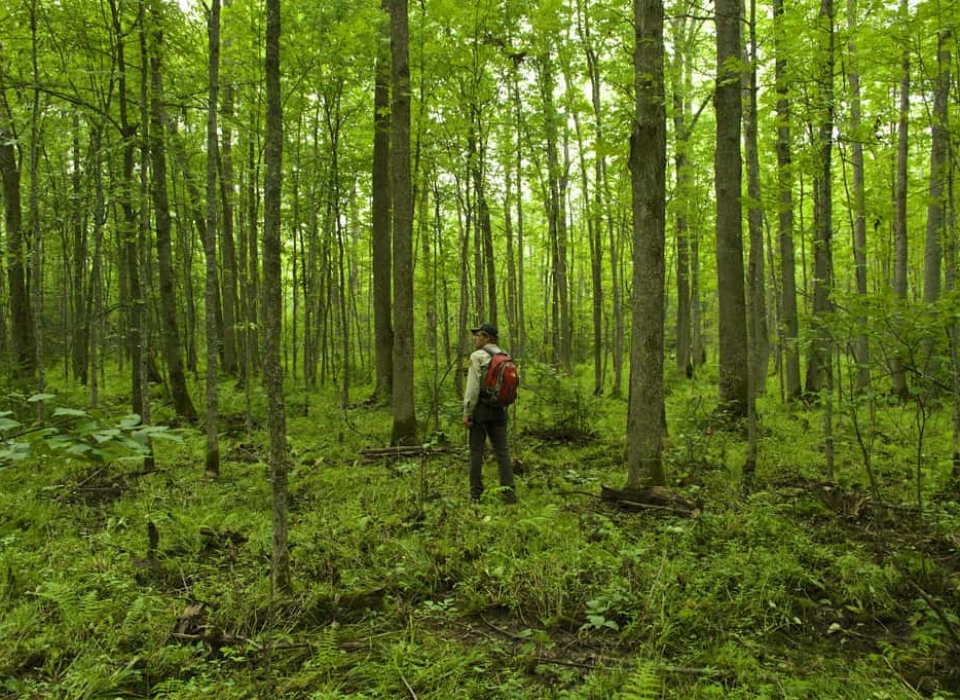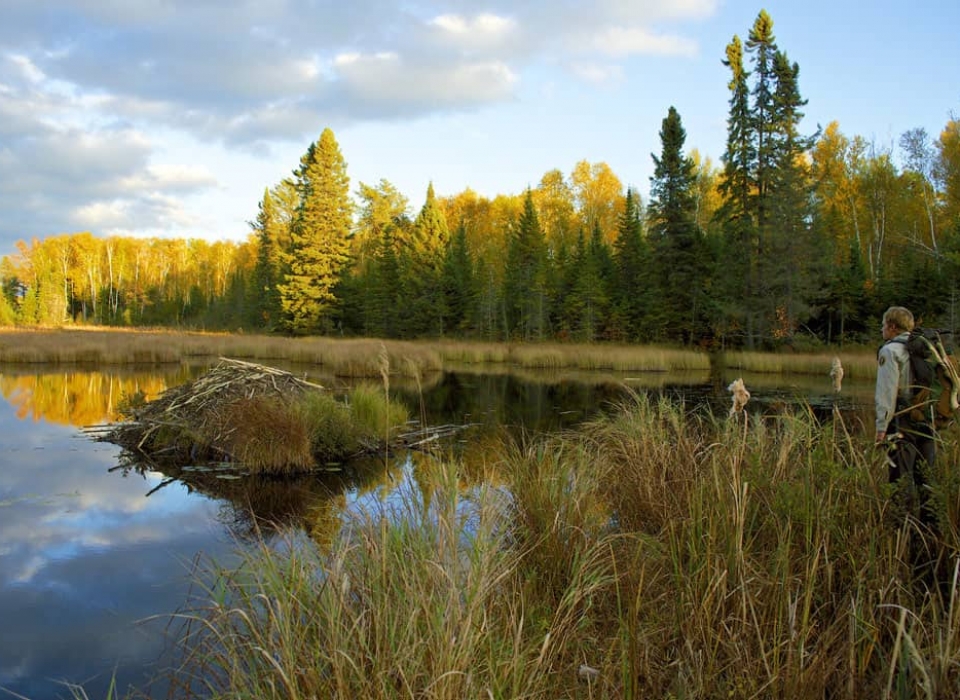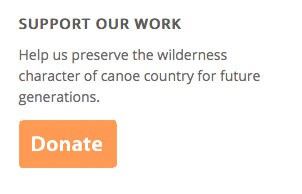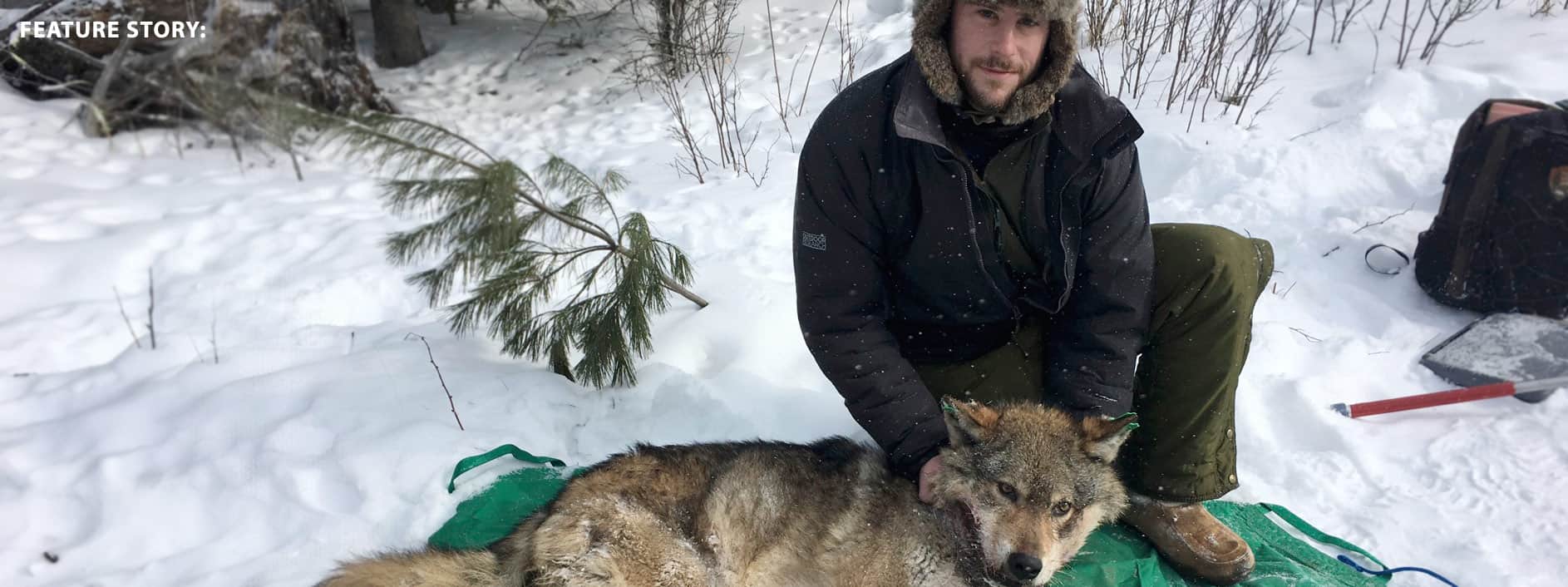
Uncovering the secret lives of wolves
By Alissa Johnson
Imagine a wolf kill, and the remains of an ungulate—a hoofed animal like a moose—probably come to mind. Yet scientists have known for some time that wolves also eat smaller prey, like deer fawns and beavers. This is particularly true during summer, when wolf packs primarily hunt and travel as individuals or pairs.
What hasn’t been well understood is how wolves kill those smaller mammals, or how their presence affects wolf predation of larger mammals. An ongoing study in Voyageurs National Park (VNP), however, is uncovering summer wolf predation on beavers. It’s leading to new insights about the ways wolves hunt—breakthrough information helping scientists create a fuller picture of how wolves impact the larger ecosystem.
“Wolves and beavers are important ecological species. Beavers totally transform landscapes and wolves can too in direct and indirect ways. Understanding factors that cause those populations to change and fluctuate has implications for Voyageurs and beyond,” said Tom Gable, researcher and PhD student at the University of Minnesota. He’s been working with VNP and park wildlife biologist Dr. Steve Windels for the past several years, studying wolf-beaver interactions.
Gable likens it to untangling the “secret lives” of wolves, and he isn’t exaggerating. Until recently, studying wolves during the summer has been difficult.
What researchers haven’t been able to study
Dr. David Mech is a senior research scientist with the U.S. Geological Survey and a professor at the University of Minnesota. He’s been studying wolves since 1958, and knows these challenges first hand.
“It’s been quite hard for science to learn very much about how wolves function in the summer,” Mech explained. “We know a lot about their movements and things like their denning behavior, but we don’t know much about their hunting in summer.”
Scat collection has shown that they eat primarily deer, moose and beavers, but understanding how they hunt has been another story. Mech himself has tried, attempting a study of summer wolf-beaver interactions in northeastern Minnesota about a decade ago. Of the 200 localized areas of wolf activity that Mech and the team investigated, they found only one beaver kill.
He attributes some of that to the particular pack he studied, but wolves are also hard to study during the summer.
As Gable explained, “In the Minnesota boreal system, the vegetation is thick.” It’s nearly impossible to see the wolves, and when they kill smaller animals like beaver, there are fewer if any remains. Fortunately, advances in GPS technology have made it possible to track wolves more closely. And with the support of VNP, Gable has been able to overcome these challenges.
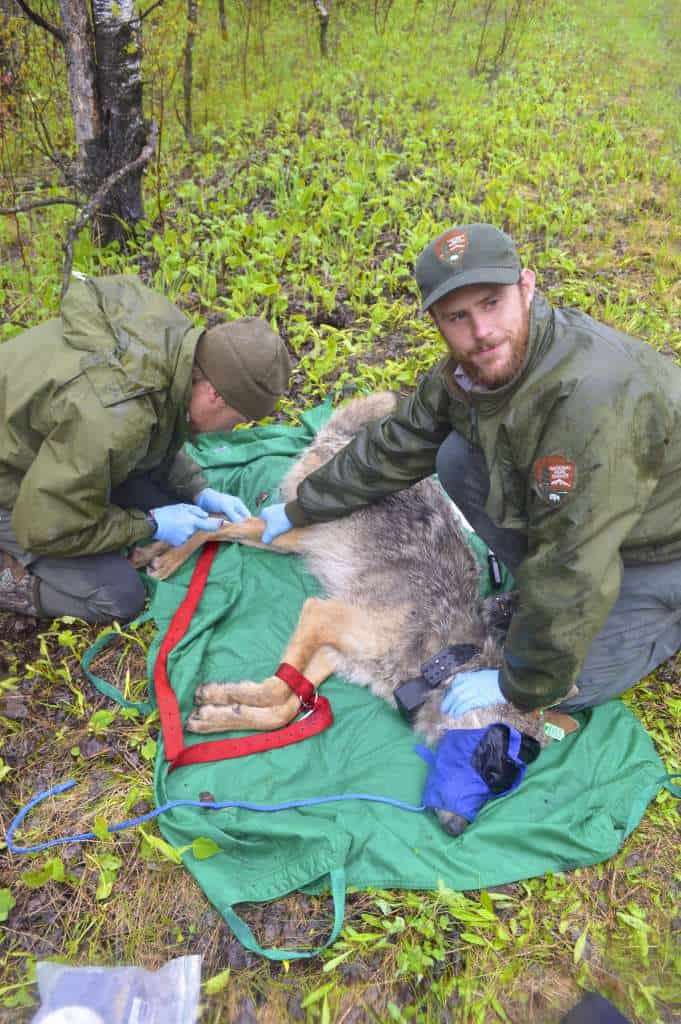
Going where the wolf goes
Gable started working with VNP in 2014, after Windels reached out to Dr. John Bruggink at Northern Michigan University looking for partners to study wolf predation. As a wildlife biologist, Windels had been monitoring wolf and beaver populations in the park since the mid-2000s and wanted to understand more about predation. Gable was looking for opportunities for his masters’ research, and the resulting partnership has continued into Gable’s PhD research at the University of Minnesota.
According to Windels, Voyageurs presents a unique opportunity to understand wolf-beaver dynamics. “Beaver population density here is likely higher than anywhere else in the United States. We also have very high wolf densities, and both deer and moose are present in the park. The densities of beavers in the park likely reflect densities of beavers that were present here before European settlement.”
That offers a unique window into how southern boreal ecosystems evolved to function. And according to Gable, “We are trying to gobble up as much information as we possibly can to have better idea of what’s going on out there.”
To do that, Gable and the team fit wolves with GPS collars that transmit the wolf’s location every 20 minutes, or 72 locations per day. When consecutive locations are within 200 meters of each other, Gable and a crew of four to six research assistants and volunteers investigate those clusters as possible kill sites.
“We do this every day,” Gable said. “From eight until five, we’re bushwhacking and going where the wolf goes.”
Once or twice a week, the crew heads back into the field after dinner. They drive around and howl for wolves until three or four in the morning. The late nights enable them to locate packs they haven’t been able to collar. They also set up cameras near beaver ponds and lodges. The semiaquatic rodents don’t have the necks for GPS collars so the cameras provide insight into animal behavior in these areas.
The efforts are yielding what Gable calls “insight no one else has.”
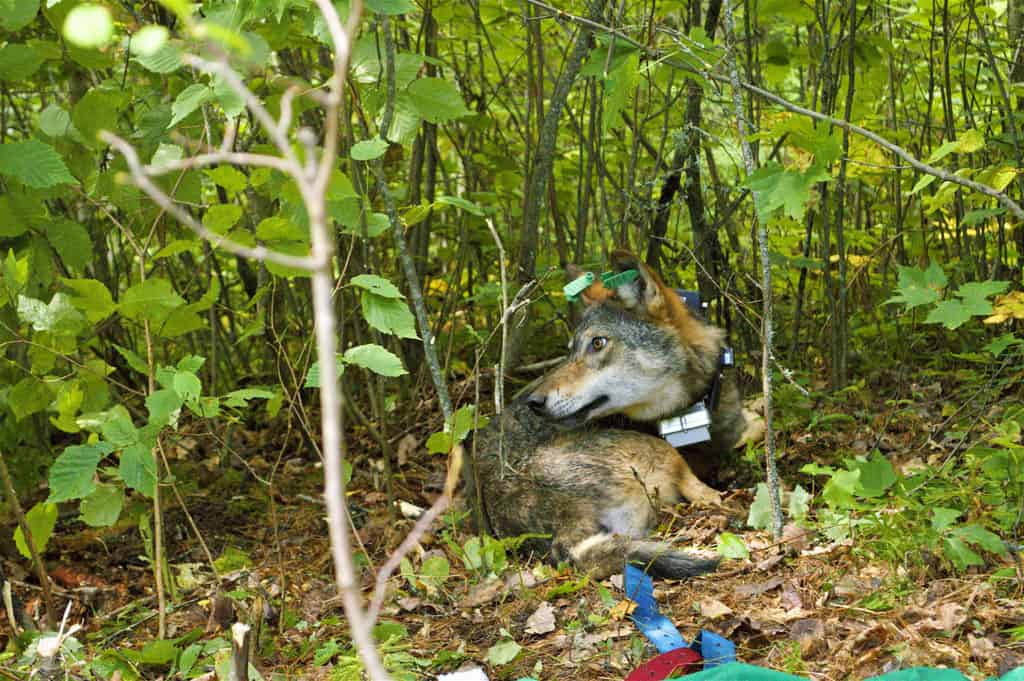
New insights into wolf-beaver dynamics
When wolves hunt deer and moose, Gable says they primarily outrun and outlast their prey. Wolves are not known for secretive behavior or waiting out their prey. However, Gable and his colleagues determined that wolves appear to hunt beavers by bedding down next to feeding trails and lodges, and then ambushing the beaver when it comes close. They published these findings in 2016.
Interestingly, this behavior isn’t consistent from wolf to wolf; some wolves appear to specialize in hunting beaver. Dr. Joseph Bump, Gable’s co-advisor with Windels, is a University of Minnesota associate professor and Gordon W. Gullion Endowed Chair in Forest Wildlife Research and Education. He noted that this behavior is “not only opportunistic, but very deliberate in some cases. And it is not uniform across the wolf population or even within packs.”
Understanding this type of individual variation in predatory behavior is what Bump calls a cutting edge area of predator-prey ecology.
The research is also revealing some interesting insights about the effects of this predation on the beaver population. In 2017, Windels and Gable published a paper outlining that impact.
“We found that one pack removed around 40 percent of the beaver population in its territory,” Gable said, or about 80-88 beavers. “Previous research has shown that once hunters and trappers remove around 25 to 30 percent of a population, we start seeing the population decrease. But we saw that even though wolves removed 40 percent, the next year the beaver population increased by 43 percent. It shot way up.”
There are so many beavers in Voyageurs that as wolves remove them, beavers from other areas move in. And understanding this type of relationship is completely new territory. According to Gable, theirs was the first such estimate published in the scientific literature.
The significance of the research
At this point, it’s difficult to extrapolate the impacts of this research. It could have implications for understanding wolf-prey interactions in parts of Canada and Europe where beaver are also prevalent. Parts of Canada, for example, are experiencing a decline in caribou and wolves have been implicated as a cause. Understanding how the presence of other species, like beaver, affects wolf predation could influence how land managers respond to the situation.
“One thing we’re really interested in is what is the relationship between wolf predation of beavers and wolf predation on deer and moose. We want to see, do beavers negatively impact a population of, say, moose or caribou, or do they actually benefit them?” Gable said.
“Another question we’re interested in at Voyageurs is that we have a low density of moose but haven’t seen the decline in our moose population that people have seen elsewhere in Minnesota. The question is why. What’s different about Voyageurs compared to other places, and is it possible that deals with beavers?” he continued.
The answers to these questions will only become clear over time. For now, the goal is to collect as much information as possible. And in the meantime, the significance of the findings can’t be underestimated.
In a 2015 book, Wolves on the Hunt: Behavior of Wolves Hunting Wild Prey, published by Mech and his colleagues, the section on beavers is just a few paragraphs. So little was known about wolf predation of beavers that there wasn’t much to share. The research at Voyageurs is changing that.
As Mech himself said, “It represents a breakthrough.”
Learn more about research at Voyageurs National Park on their website.
